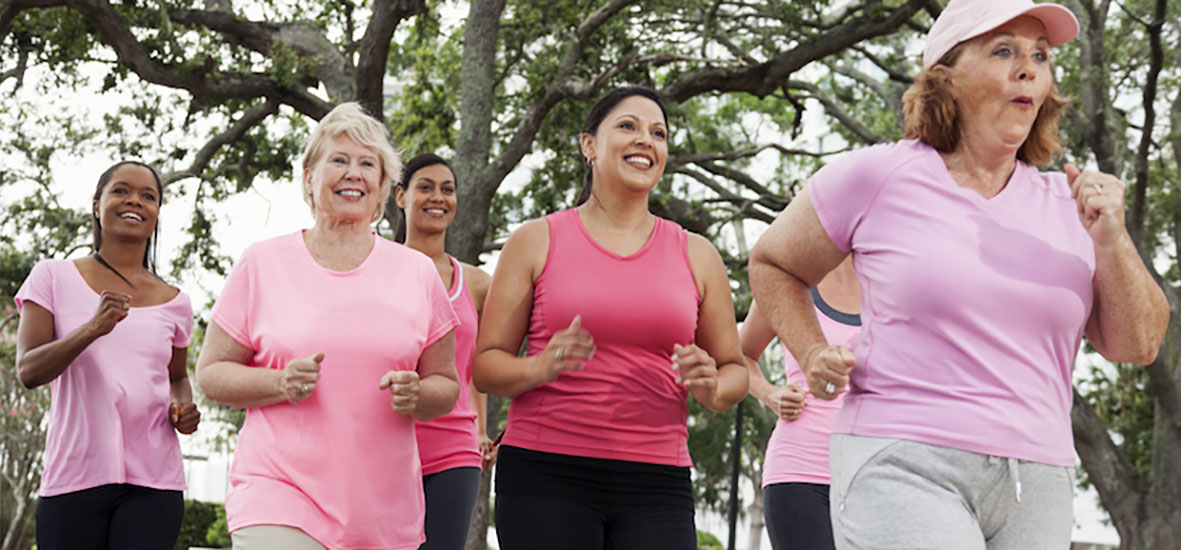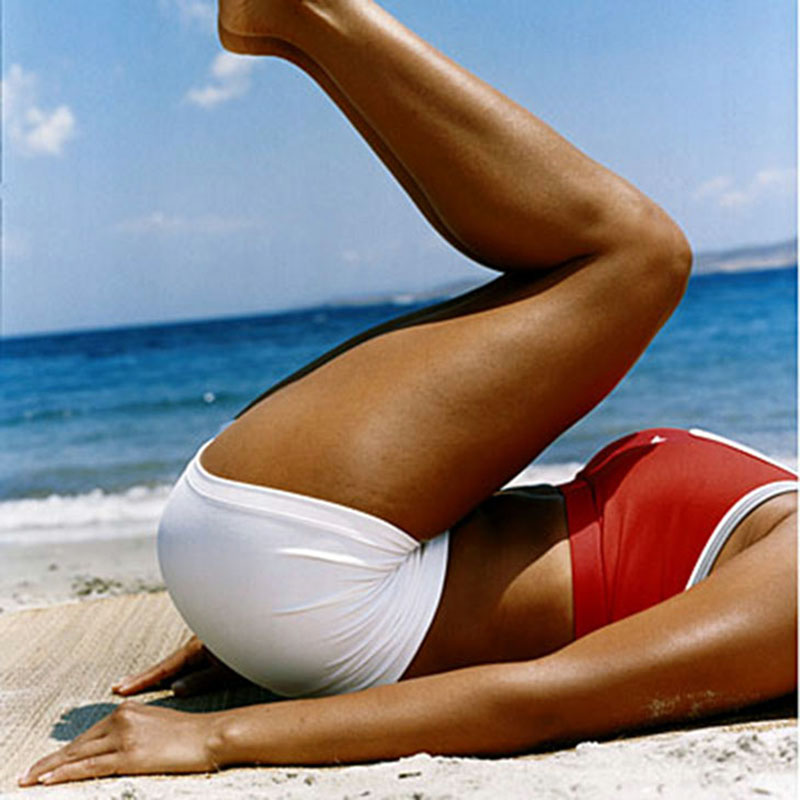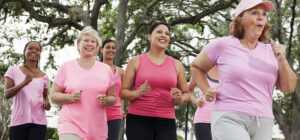Fit to Be a Mom? How Exercise Affects Your Fertility
Pragnancy
Your devotion to exercise could help – or hurt – your odds of conceiving. Here are fertility facts every woman must know.
I wasn’t always sure I wanted to be a mom. I love to spend time with friends, go for runs and spoil my dog, and for many years that was enough. Then I met Scott, who was so passionate about starting a family that in falling in love with him, I started to see things differently. By the time he proposed, I couldn’t wait to make babies together; it was so easy to imagine having a full life with kids in tow.
Shortly after we got married, though, I was diagnosed with endometriosis, a disorder in which the lining of the uterus grows in other areas of the body, raising the odds of infertility. After I had surgery to remedy the condition, specialists told me that my chances of conceiving within two years were pretty good.
So for more than a year now Scott and I have done our best to create a little human. Hoping to boost my odds, I’ve sipped Chinese herbs that taste like mud, eaten bags of antioxidant-packed goji berries, popped Mucinex to increase cervical mucus, and even received a Maya abdominal massage from a self-described fer?tility goddess. The rubdown technique, passed down through generations of midwives and healers, is intended to guide reproductive organs into the proper position and improve their function. Too bad it just gave me gas.
Strangely enough, I’ve never been thrown by any of these unorthodox sug?gestions. Hey, who am I to question the wisdom of healers? I was shocked, however, when my fertility acupuncturist and then my reproductive endocrinologist, a doctor specializing in reproductive disorders, suggested that to increase my chances of conceiving, I should relax the intensity and duration of my exercise routine. My 90-minute gym habit five days a week not only improved my health and kept my weight in check but also minimized my baby-making stress. So when did a good workout become a bad idea?
The Guideline Gap
“We’ve known that weight is an important factor in fertility, but considering the role of exercise is a recent phenomenon in Western medicine,” explains Robert Brzyski, MD, PhD, professor of obstetrics and gynecology at the University of Texas Health Science Center at San Antonio and chair of the ethics committee of the American Society of Reproductive Medicine (ASRM). Preliminary research suggests that regular workouts may actually improve reproductive function: A study in Obstetrics & Gynecology concluded that women who exercised 30 minutes or more daily had a reduced risk of infertility due to ovulation disorders. On the other hand, some data links too much vigorous exercise with lowered fertility, as both a 2009 study in Human Reproduction and a Harvard study of elite athletes found. Clearly fitness activity plays a role in a woman’s chances of conceiving, yet “studies on which to base fitness advice are still difficult to find and often contradictory, so it’s been hard to give women definitive guidelines to follow,” Dr. Brzyski says.
With so little to go on, it’s no surprise women’s-health organizations don’t provide doctors with any specific rules on exercise frequency or intensity for women trying to conceive. In turn, most ob-gyns and specialists don’t dole out fitness advice, especially to women with a healthy body mass index (BMI) and a normal menstrual history. Once a woman has been trying unsuccessfully for a year — the definition of infertility — Dr. Brzyski will assess common issues such as her age, her cycles and ovulatory status, and the condition of her uterus and tubes and her partner’s sperm. Only after that will he consider whether too much or too little physical activity is tripping things up. “Unless a woman’s periods are absent or irregular, exercise is usually the last variable we look at, because it’s the one we know the least about and one whose effect varies from woman to woman,” he says. “But research is beginning to suggest it’s more important than we realize.”
The Ideal Weight to Conceive
The numbers on your scale can also be key to your ability to conceive. Exer?cise, of course, can help regulate your weight, but only if you’ve got a realistic grip on the numbers. According to a 2010 University of Texas Medical Branch at Galveston study, nearly 48 percent of underweight, 23 percent of overweight, and 16 percent of normal-weight reproductive-age women don’t accurately assess their own body weights. Such a misperception could have an impact on your health habits, which could then affect your fertility.
Moreover, your ideal weight for hitting 5K PRs or fitting into your skinny jeans may not be the weight most conducive to conceiving. “You don’t have to be a size 6 to have a baby,” says lead study researcher and ob-gyn Abbey Berenson, MD. “This isn’t about what looks good on a runway. It’s about making your body healthy enough to carry a child.” The sweet spot for many women translates to the normal BMI range (18.5 to 24.9), which is associated with optimal reproductive function. Research shows that 12 percent of infertility cases may result from being under that range and 25 percent from being over it. The two extremes tax the body in ways that disturb hormone production and ovulation, Dr. Brzyski says.
Even so, BMI is not always the best way to assess how weight will affect reproductive function. The measurement is based on height and weight and doesn’t distinguish between fat and muscle — and fit women have a lot of lean muscle mass. William Schoolcraft, MD, founder and medical director of the Colorado Center for Reproductive Medicine in Denver and author of If at First You Don’t Conceive, often sends his patients to an exercise physiologist to measure their body fat percentage (through skinfold-caliper or buoyancy testing) instead. Ovulation is impaired if body fat is less than 12 percent or more than 30 to 35 percent, he notes. “Women take getting their periods as a sign they are at a healthy BMI and have normal fertility,” Dr. Schoolcraft says. “However, you can have regular or somewhat regular periods and not ovulate, though it’s unusual.” If you menstruate every 26 to 34 days, you probably ovulate, but to make sure, pick up a basal body thermometer at a pharmacy. On waking, use the device at the same time each morning to measure your temperature, and track it on a basal body temperature chart (download one at womenshealth.gov/pregnancy/mom-to-be-tools) to see if you’re ovulating.
How Your Weight Affects Your Fertility
Though disrupted cycles and missed periods are commonly associated with elite athletes, Jamie Grifo, MD, PhD, director of the NYU Fertility Center in New York City, also sees his share of weekend warriors who overdo it. “I tell them to scale back,” he says. “You want your body to be a fertility-promoting environment.” More than an hour of vigorous exercise a day can lead to a decrease in the production of the hormones that stimulate ovary function, causing ovaries to become underactive and stop producing eggs and estrogen, in some women. The risk increases with exercise duration and intensity. What’s more, Dr. Schoolcraft says, intense exercise sessions cause the body to break down the proteins in muscles, producing ammonia, a pregnancy-inhibiting chemical.
It seems counterintuitive that something that makes you feel good and has been proved to protect your body against myriad diseases and health problems can actually be bad for your fertility. Here’s what happens: “Intense exercise lowers progesterone and throws off your hormone levels,” says Sami David, MD, a reproductive endocrinologist in New York City and coauthor of Making Babies: A Proven 3-Month Program for Maximum Fertility. “Endorphins can suppress your FSH and LH, the hormones in your pituitary gland responsible for producing eggs, and the ovarian hormones estradiol and progesterone, making it harder for you to get pregnant or more likely to miscarry without knowing it.” The bottom line: “The extremes of exercise — too much or too little — are never good,” Dr. Grifo says. “You need to find a balance between the two; that’s when your body functions optimally.”
Michelle Jarc, 36, a teacher in Cleveland, got the same message from her doctor after she suffered a miscarriage and tried unsuccessfully for nine months to conceive again. “I’m a runner, and at that time I was racing in a 5K just about every weekend,” Michelle says. Although her weight put her in the normal BMI range, she was having irregular menstrual cycles. Her doctor, who suspected that Michelle wasn’t producing enough estrogen, put her on Clomid (a prescription drug that induces ovulation) and advised her to cut back on her workouts and, for good measure, gain a few pounds. “It was hard at first to listen to her advice. I was obsessed with being fit and maintaining my figure. But having a child became more of a priority,” Michelle says. So she cut her twice-daily exercise routine to just one 30- to 45-minute-a-day workout and stopped worrying about what she ate. After that, conceiving was a cinch. Today Michelle has four kids — a 5-year-old daughter, a 3-year-old son, and 14-month-old twin boys — and is back to her prepregnancy weight and competing in 5Ks again.
Yet for sedentary women the subtle physiological changes that come from increasing exercise can benefit their odds of conceiving. Exercise improves metabolism and circulation, both of which contribute to better egg production. Regular activity also optimizes your reproductive system by stimulating the endocrine glands, which secrete hormones that help eggs grow. Plus, getting your sweat on is a known stress reliever — a good thing, because stress significantly decreased the probability of conception in one study.
All those fertility-boosting benefits could help explain why some women find a bun in the oven shortly after stepping up their exercise routine. A doctor originally put the odds for Jennifer Marshall, 30, a marketing manager in Cincinnati with reproductive complications, to get pregnant at only 0.5 percent. Fast-forward through seven years of tests, surgeries, and many artificial insemination attempts: “I thought I would never get pregnant,” Jennifer admits. Yet eight weeks into P90X — a home DVD-based workout and nutrition program that she started because she was bored with her less intense walking and biking sessions — she found herself staring at a plus sign on a pregnancy-test stick. Whether exercise was the ultimate catalyst, Jennifer’s docs can’t say. “They were just shocked I got pregnant,” she says. But the new routine, which helped her lower her weight to 170 (at 5 feet 8 inches, she’d previously fluctuated between 175 and 210), was all that had changed recently. She gave birth to a healthy baby girl this past March.
Expert Advice to Boost Your Fertility
The default stance — mostly because there have been no controlled studies of exercise in women who are trying to get pregnant naturally — is that normal-weight women should work out at the “public health” dosage of 150 minutes weekly, says Sheila Dugan, MD, chair of the American College of Sports Medicine’s Strategic Health Initiative on Women, Sport, and Physical Activity. That translates to 30 minutes of moderate-intensity activity (you break a sweat and are winded but can still speak in short phrases) five days a week. Under- or overweight women should seek evaluation from a certified fitness professional, like an exercise physiologist or trainer, to tailor a program based on their energy input and output, Dr. Dugan says.
Some specialists are going beyond this generic mandate. Here’s what several top docs recommend for their patients and FITNESS readers.
If you’re a normal weight
There is no need to give up your regular runs or, say, Zumba classes. Just keep your workouts to an hour or less a day. If your cycle is irregular or you haven’t conceived after a few months, cut back further on exercise. Also, this isn’t the time to train for your first competitive event or start a rigorous gym class. “If you make a dramatic increase in your exercise level, even if BMI or body fat percentage stays the same, the stress can have a negative effect on reproductive hormone production and fertility,” Dr. Brzyski says.
If you’re underweight
Aim for 2,400 to 3,500 calories a day to gain the weight that will get you into the normal BMI range, or body fat above 12 percent. If you’re exercising five or more days a week, consider cutting back to three. Alice Domar, PhD, executive director at the Domar Center for Mind/Body Health at Boston IVF, says hatha yoga appeals to many women in this category: “It keeps them fit and toned without the potential adverse impact of vigorous exercise.”
If you’re overweight
Trim calories and gradually up your exercise to reach a fertility-friendly BMI. Aim for 60 minutes of cardio five days a week, and strength-train for 30 minutes three times a week. Even so, “you can work out too hard even if you’re overweight,” Dr. David cautions. “Build up your tolerance slowly.”
If you’re undergoing fertility treatments
Talk to your doctor before you step on that treadmill. Intense, vigorous or high-impact exercise may cause ovaries that have been enlarged by the use of fertility drugs to twist — a medical emergency.
So where does all this leave me? Parting with my favorite butt-kicking Spinning class was bittersweet. But nearly two years into our baby mission, I was running out of options, so I decided to scale back my routine. Now I run four miles three days a week and do a light weight-lifting routine twice a week. I switch to the stationary bike for my cardio fix during the second half of my menstrual cycle to avoid the pounding of running during and after ovulation. My body’s a little softer, but my jeans still fit and my endo-induced cramps aren’t half as bad as I thought they would be. Scott and I aren’t buying diapers yet, but we realize that my body is a tricky one to figure out. Still, I have to believe that every little change counts, as long as it doesn’t mean any more belly rubdowns from a fertility goddess.
5 Ways to Boost Male Fertility
By Lisa Haney – Fitnessmagazine
Your guy’s fitness habits also affect your chances of conceiving. Whip his swimmers into shape with these tips.
Go on gym dates.
“Working out together is a great first step,” says Larry Lipshultz, MD, professor of urology and chief of male reproductive medicine at Baylor College of Medicine in Houston. Regular exercise decreases fat and increases lean muscle, leading to less estrogen and more testosterone and better sperm production, he explains.
Keep things loose.
Too-snug running tights or bike shorts may increase heat around his testicles, which is bad for sperm production.
Scope out his seat.
Hard, narrow bicycle seats put pressure on the perineum, reducing blood flow to a man’s genitals. Dr. Lipshultz suggests that men saddle up in a seat that spreads the pressure out laterally, such as one that is split or has gel padding.
Skip the hot tub.
Yes, it’s great for sore muscles. But research shows the ultrahot water stunts the production of sperm, Dr. Lipshultz says.
Check his SUPPS.
Make sure your guy isn’t taking any testosterone supplements or prohormones to gain muscle. “Testosterone that comes from outside the body is bad for sperm,” Dr. Lipshultz says.
Deli ovaj sadržaj:















Post Comment